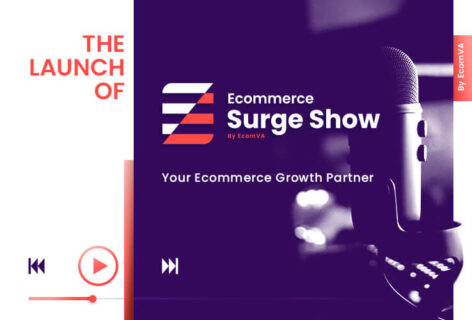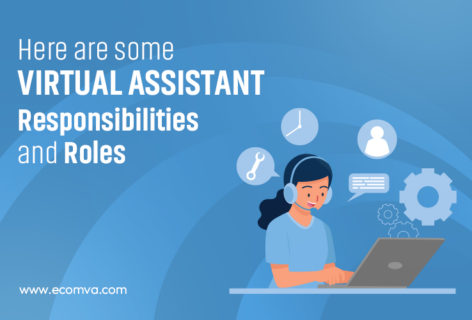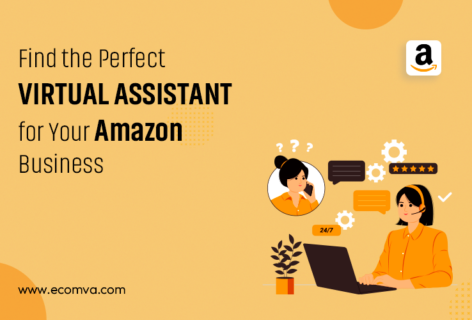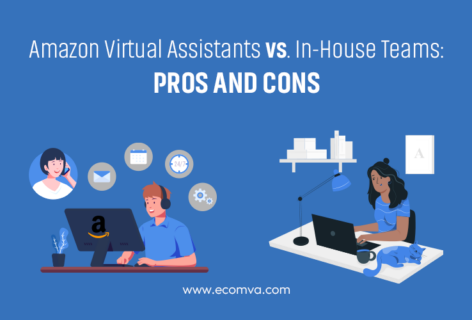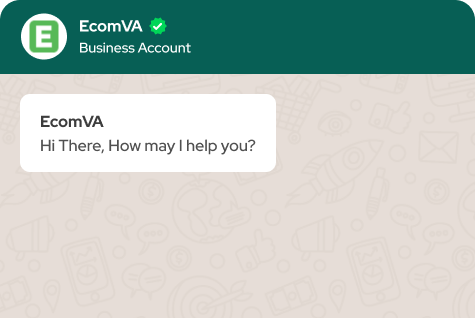How To Build A Fashion E-Commerce Website That Converts In 2024!
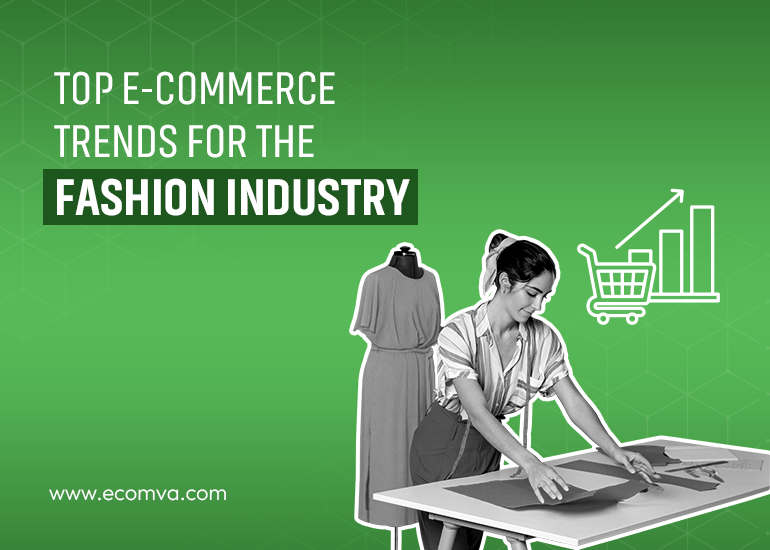
The fashion world has seen a significant change as customers are no longer going to physical stores but are now finding it easier to shop online through fashion e-commerce websites, with greater convenience and choice.
But, how do you make your mark in this highly competitive digital market? The answer is a strategically designed website that guarantees that all the visitors turn into loyal customers effortlessly.
This ultimate guide provides you with every vital step needed to create a high conversion rate fashion e-commerce website for 2024.
A step-by-step guide to building a fashion e-commerce website
Step 1: Define Your Brand Identity
When creating a website for fashion retail businesses, it is essential to first establish your brand identity. This represents the soul of your business, including the way you speak about it (brand voice), the way it looks (visual style), and what you stand for (core values).
A strong brand identity strikes a chord with your target audience and distinguishes you from your competition.
- Craft a Compelling Brand Story: What sets you apart? Is the world of sustainable fashion what stirs your soul? Perhaps you offer chic clothes at pocket-friendly prices. Share your story and core principles. This way you’ll forge an emotional bond with your would-be clients.
- Develop a Distinctive Voice: How best to communicate with your audience? Would you adopt a light-hearted and amiable tone, or showcase sophistication laced with luxury? Ensuring this consistent voice — be it on your webpage, social platforms, or promotional material — builds brand recognition.
- Choose a Memorable Brand Name and Logo: For customers who are deciding whether or not to take the plunge, your brand name and logo are their initial points of contact. Fashion e-commerce services will keep them easy to remember, attractive to the eye, and aligned with your brand identity, all while being visually appealing.
Step 2: Know Your Target Audience
- Who is your ideal customer? Consider their age, gender, style choices, and income bracket to craft a detailed portrait of your target audience.
- Consider what they need and want: Do they value comfort over style or affordability over both? Knowing their struggles helps you customize your products and website messages to fit those specific needs.
- What is the preferred online shopping destination for them? Study top fashion brands and social media platforms that attract your target audience.
Step 3: Choose the Right E-commerce Platform
It is important to understand that your e-commerce platform is the backbone of your online store. It helps you take care of your products, customers, and orders effortlessly.
When selecting a platform, a website development company will keep these points in mind:
- Usability: Find a platform that is easy to use, with an interface that any user can easily navigate without having to be well-versed in coding.
- Features: Be sure the fashion e-commerce services platform provides all necessary features, including but not limited to product listings, shopping cart capabilities, secure payment processing, and inventory management.
- Scalability: It is important to take into account your future growth plans when selecting an e-commerce platform. You need to ensure that the platform will be able to meet your needs as your business grows in the future.
- Cost: With respect to cost, fashion e-commerce services platforms have different pricing plans. Choose a plan that not only fits into your budget but also offers the required features.
Some popular e-commerce platforms for fashion businesses are Shopify, BigCommerce, Wix Ecommerce, and Squarespace Commerce. Each platform comes with its own set of advantages and disadvantages. Therefore, it is essential to conduct research and compare them to determine which one best suits your requirements. Or, you can hire a reputable website design company to skip this tedious step.
Step 4: Set Up Your Website
When you have decided on your platform, it is now the time to create your site. The major steps in the process are outlined below:
- Domain Name and Web Hosting: Your domain name is what identifies your website (e.g., yourbrand.com). Web hosting stores the data of your website and makes it available on the internet. A lot of e-commerce platforms provide combined packages for registering a domain name and web hosting services.
- Install a Theme: In general, the majority of fashion e-commerce services platforms offer numerous website themes that are made specifically for online stores. Choose a theme that reflects your brand identity, has an attractive visual appearance, and has a layout that is easy to navigate.
- List your products: Ensure to have well-detailed product listings with high-quality photos that allow customers to view products clearly, descriptions that provide information about the product, and sizes that are accurate. Highlight the features of each product as well as consider video demonstrations to show how the product functions.
Step 5: Prioritize User Experience (UX):
Positive user experience (UX) plays a key role in retaining visitors’ attention and converting it into customers. It can also help improve your fashion e-commerce SEO. Your website should be easy to navigate on all devices: desktops, tablets, and smartphones.
Here are some key UX aspects to focus on:
- Simple and Clean Layout: Do not overwhelm your website with excessive information. Use straightforward menus and easy-to-follow navigation techniques so that users can easily locate their desired content.
- Fast Loading Speed: Nobody has the patience for a slow website. Ensure that your site loads swiftly by optimizing both images and code.
- Mobile-Responsiveness: Mobile-responsiveness is a non-negotiable feature in our current mobile-centric world. Every fashion e-commerce website should be able to adjust its display to suit any device on which it appears at its best.
- High-Quality Product Images: People shop with their eyes first. Go for professional and high-quality product images. The photos should present your clothing in various perspectives and on diverse models. You can even consider 360-degree views and zoom options to allow for a detailed product inspection.
- Clear Search Functionality: Help your customers find what they are looking for without a hassle by incorporating an easy-to-use search bar with appropriate filters. Users should be able to filter their search results based on size, color, price range, or category. It’s all about delivering exactly what they want at their fingertips.
- Detailed Product Descriptions: It’s not enough to list features when providing detailed product descriptions, let the benefits take center stage. Portray the emotional impact that the product can have on customers and how it can enhance their style sense. Write in simple and straightforward terms, sidestepping any technical lingo.
Step 6: Optimize Your Website for Search Engines (SEO):
Search engine optimization (SEO) makes your website appear at a higher position in search results when users type keywords related to what you offer. This results in an increase in people who visit your online store without paying for any advertising.
Here are some primary strategies:
- Keyword Research: Find the specific keywords that your desired audience uses when seeking out fashion products. Use unpaid and paid keyword research tools to locate relevant search terms, striking a balance between high search volume and low competition.
- Keyword Optimization: Add your identified keywords seamlessly within your product descriptions, page titles, meta descriptions, and overall website content for keyword optimization. Yet be cautious not to excessively saturate content with keywords. Overuse can hinder rather than boost your fashion e-commerce SEO efforts.
- High-Quality Content Creation: When it comes to high-quality content creation, focus on crafting compelling blogs that explore fashion trends and styling tips or industry news updates. By doing so, you not only position your brand as an authority in the field but also draw in organic traffic through search engines.
Step 7: Integrate Secure Payment Processing:
Establishing a safe and reliable checkout process is instrumental in increasing customer trust and boosting conversion rates.
Here are a few points to keep in mind:
- Multiple Payment Options: Provide a wide range of popular payment modes including credit cards and debit cards. Additionally, consider the incorporation of digital wallets such as Apple Pay or Google Pay. This is essential to meet the demands of your customers in their preferred payment methods, thus, preventing any termination of the checkout process.
- Secure Checkout Process: The implementation of Secure Socket Layer (SSL) encryption is a vital component in ensuring the security of customer data during transactions. To increase the level of trust during transactions, include a well-recognized trust seal from a trustworthy security company on your checkout page. If you need it, you can get help from a website development company here, as they are well-versed in developing secure websites.
Step 8: Streamline the Checkout Process:
An easy and seamless checkout process works to reduce resistance from customers. This would lead to an increased rate of purchases. Here are some ways to make the experience simpler:
- Guest Checkout Option: Let users buy the products without any need for an account, which could be a roadblock for some customers not interested in going through the account creation process.
- Clear Order Tracking: Make sure that customers receive visible order tracking information upon placing their order so that they can easily track the shipment.
- Transparent Shipping Costs and Estimated Delivery Times: Display the shipping costs and delivery times clearly before checkout. This way customers won’t be caught off guard with surprises.
Step 9: Plan for Long-Term Success (Continued):
- Stay Informed and Adapt: The fashion e-commerce industry is always changing. Keep yourself informed about innovations like virtual try-ons using VR and AR. You can also include these advanced features into your system as a way to improve user experience. This also keeps you at the top.
- Embrace New Technologies: Use chatbots that can provide round-the-clock customer service and address common queries. Implement influencer marketing strategies to team up with fashion influencers who have a large reach and can advertise your brand to their followers.
- Consider Outsourcing Tasks: Running a profitable e-commerce fashion business takes a lot of effort. To free up your time to concentrate on your primary company goals, you can outsource your work to website development VA.
EcomVA: Your Virtual Assistant Partner in Fashion E-commerce Success
EcomVA can be your partner in success whether you’re a well-established store wishing to increase your online presence or a startup fashion business trying to launch a new collection. We provide a full range of virtual assistant services designed to meet the unique requirements of e-commerce fashion companies.
Get in touch with EcomVA right now to arrange a consultation and talk about how our website development VA can support your fashion e-commerce objectives!

